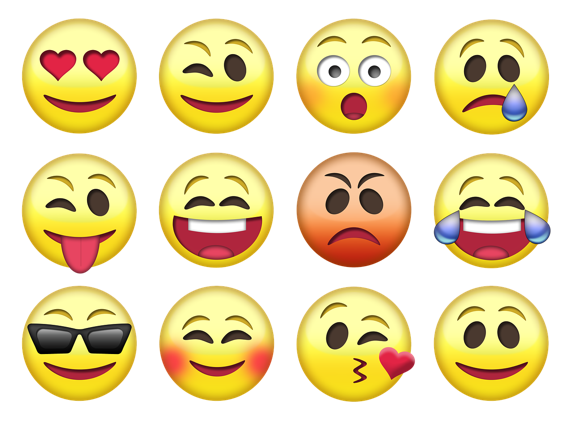emoji

Emoji are pictograms used in electronic communications. An emoji is a digital icon used to express an emotion or idea, a twenty-first century updating of the old ascii emoticons like the winking face, ;-), used to mark a joke or sarcasm.
The etymology is rather straightforward but may be a bit surprising to some. It’s a borrowing from Japanese, which shouldn’t surprise anyone, but the origin has nothing to do with emotion, as the emo- might suggest. Instead it’s a compounding of e-, meaning picture, and -moji, meaning a letter or character. The word in Japanese dates to at least 1928, and it may be a calque of the English pictograph, which is a blend of similar semantic elements, picto- (picture) + -graph (writing). So the Japanese may have borrowed it from English, translated it into Japanese, and then given the Japanese version back to English.
English use of emoji dates to at least 1997, when it appears in the Nikkei Weekly, an English-language Japanese newspaper:
P-kies CD-ROM Emoji Word Processor software featuring more than 500 pictorial symbols has become a hit since it debuted July 11.
The first citation in the Oxford English Dictionary from a non-Japanese source is from Wired magazine in 2001:
Emoji […] consists of tiny pixelated images that sub for words in mobile gossiping.
Sources:
Oxford English Dictionary Online, December 2013, s.v. emoji, n.
Image credit: Spaynton, 2019. Wikimedia Commons. Licensed under a Creative Commons Attribution-Share Alike 4.0 International license.